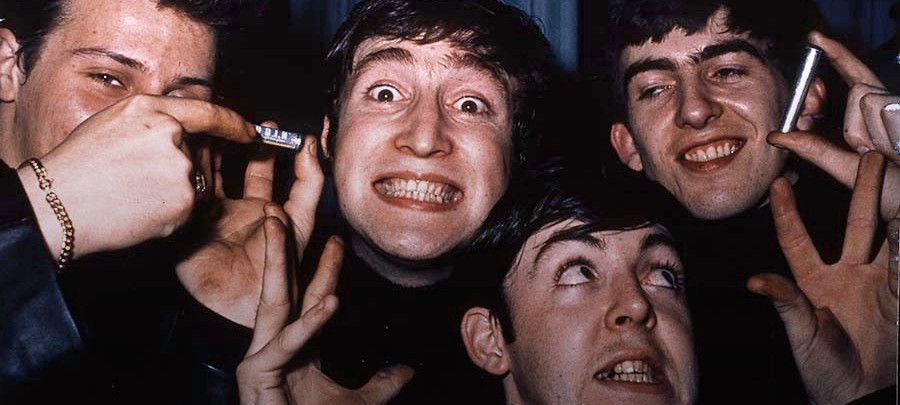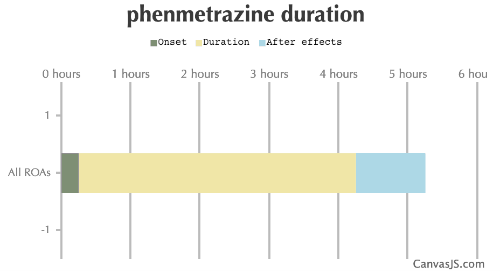[ Home ] [ Controlled Substances ] [ Stimulants ]
PHENMETRAZINE
|
Phenmetrazine is an anti-obesity drug, which was discovered by Boehringer-Ingelheim in 1952 and approved by FDA under the name Preludin. Later on the drug was withdrawn from the market due to the reported cases of abuse. According to some studies, misuse of phenmetrazine turned many young addicts to crime. It is suggested that the drug exerts its effect by inhibiting the monoamine transport.
 Phenmetrazine:
Phenmetrazine:
https://drugs.ncats.io/drug/XA501VL3VR
Preludin tablets, also known as Prellies:
The active ingredient in Prellies is phenmetrazine, a stimulant drug that is now illegal all over the world. It was patented in 1952 by German pharmaceutical firm Boehringer Ingelheim and came to market in 1956, but was banned internationally fifteen years later.
Phenmetrazine was incredibly popular in its day, taken, biographers claim, by John F. Kennedy, Elvis Presley, Frank Sinatra, Tennessee Williams, Truman Capote, and Marilyn Monroe, among others. It was sold all over the U.S. and Europe in the 1960s, as an anorectic - a diet aid, since it controls appetite. It also produces a euphoric rush by hitting the brain's dopamine pleasure and reward centers, just as good food with friends, a gambling win, and sex do. But phenmetrazine - like cocaine, amphetamines and other stimulants - hits those pleasure centers harder and longer.
Phenmetrazine was no different from most of the synthetics used in the 1960s: legitimate prescription drugs that were diverted into the hands of users looking for a kick. But with the consumption of drugs so prevalent following the 1960s psychedelic and counter cultural explosion, the authorities felt the need to act.

https://medium.com/matter/the-drug-revolution-that-no-one-can-stop-19f753fb15e0
The Beatles:
Left Liverpool for Hamburg in August of 1960. By the end of the 39 weeks they played there on four trips from 1960 to December 1962, Beatles biographer Mark Lewisohn estimates, the band played about 1,110 hours. On one trip to Germany, the band played 415 hours in 14 weeks.That's a dream job for a bunch of teenagers. But it was still hard: The early Beatles' shows were raucous, and they didn't like to repeat themselves on stage. Lewisohn's new book - Tune In, an engaging, detailed narrative of the Beatles from before birth to the eve of their big break in 1963 - offers revelations as to what helped the band with this exhaustive work schedule: prellies, an upper that has since been removed from the market.
Officially known as phenmetrazine and sold under the name Predulin, the drug was popular in Europe in the late 1950s and early 1960s. Prellies were especially easy to obtain in Hamburg's red light district, St. Pauli. Sold as a diet pill, prellies became the drug of choice for the Beatles and other bands looking to stay sharp and awake. Tony Sheridan - whose "My Bonnie (https://www.youtube.com/watch?v=pBhqy07_KWw)" features the Beatles as a backing band, the group's first recording - helped introduce the Beatles to the drug in 1961, during their second trip to Hamburg. "Here's something to keep you awake," he reportedly told the group (http://www.beatlesbible.com/features/drugs/).
This wasn't like the more famous Beatles experiments with drugs later in the 1960s. For the Beatles, the prellies were more performance enhancing. The Hamburg scene in the early 1960s, drugs and all, is what turned an unknown group of teenagers into The Beatles. Speed kills, but it also helped produce the greatest band in the world.
 The Drug That Helped Turn the Beatles into the World's Greatest Band:
The Drug That Helped Turn the Beatles into the World's Greatest Band:
https://www.villagevoice.com/2014/08/14/the-drug-that-helped-turn-the-beatles-into-the-worlds-greatest-band/


https://www.reddit.com/r/Stims/comments/hcbmhn/the_beatles_twacked_out_on_preludin_an_antique/
Prescribed as an Appetite Depressant:
A sympathomimetic drug used primarily as an appetite depressant. Its actions and mechanisms are similar to DEXTROAMPHETAMINE.
- Phenmetrazine is used as an adjunct to caloric restriction in the short term treatment (a few weeks) of exogenous obesity. The anorexigenic effect of sympathomimetic compounds used in the treatment of obesity is temporary, seldom lasting more than a few weeks and tolerance may occur. To help bring about & maintain loss of wt the patient must be taught to curtail overeating & to consume a suitable diet.
- This agent is not advocated for use in obesity; equally effective alternative drugs are available that are less likely to produce dependence.
- Central stimulant & appetite suppressant effects of most of these drugs have /presently been/ inseparable. This compromises their use in the latter part of day; given after 4 pm, they interfere with sleep at night. Since much of overeating takes place in evening, their value is obviously limited.
- As with other anorexigenic agents, prolonged admin of phenmetrazine is not indicated. ... Habituation has been reported with phenmetrazine; discontinuance of the drug, however, does not result in serious withdrawal symptoms although some patients may experience depression & fatigue.
- Phenmetrazine /hydrochloride/ is contraindicated in patients with hyperthyroidism, moderate to severe hypertension, advanced arteriosclerosis, symptomatic cardiovascular disease, glaucoma, or known hypersensitivity or idiosyncrasy to sympathomimetic amines. The drug is also contraindicated in patients in agitated states or with a history of drug abuse & during or within 14 days of administration of monoamine oxidase inhibitors or any central stimulants.
- Patients should be warned that phenmetrazine may impair their ability to perform activities requiring mental alertness or physical coordination (eg operating machinery, driving a motor vehicle). Phenmetrazine should be used with caution in patients with mild hypertension, & blood pressure should be closely monitored.
- Phenmetrazine should not be used in children younger than 12 yr of age.
- Various sympathomimetic & related drugs that depress appetite have been used to make low calorie diet more tolerable. These appetite depressants are of no value without accompanying stringent dietary regimen, & it has been ... Demonstrated that, without consistent supervision, no prescribed regimen of drug or diet is predictably successful.
- Adverse nervous system effects of phenmetrazine may include overstimulation, restlessness, dizziness, insomnia, euphoria, dysphoria, tremor, & headache. Rarely, psychotic episodes may occur in patients receiving recommended dosages. Adverse GI effects of phenmetrazine may include dryness of mouth, unpleasant taste, diarrhea, constipation, & other GI disturbances. Cardiovascular effects /which may occur are/ palpitation, tachycardia, & increased blood pressure ... Other ... effects /which may occur are/ urticaria, impotence, & changes in libido.

https://www.pharmacompass.com/chemistry-chemical-name/phenmetrazine
| Duration: Stimulant drug that was previously used as an appetite suppresant, has been withdrawn from the market, due to concerns of abuse and addiction. Usually produces less nervousness, euphoria, and insomnia than drugs of the amphetamine family. Also as a study concluded, it is slightly more effective than dextroamphetamine as a weight loss agent. | |||
| Route | Onset | Duration | After Effects |
|---|---|---|---|
| Tripsit Factsheets | |||

Phenmetrazine Basic Information: http://drugs.tripsit.me/phenmetrazine | |||
| All ROAs: | 15-30 minutes | 4-8 hours | 1-12 hours |

| |||
Phenmetrazine is only found in individuals that have used or taken this drug. It is a sympathomimetic drug used primarily as an appetite depressant. Its actions and mechanisms are similar to dextroamphetamine. Belongs to the class of organic compounds known as phenylmorpholines.

https://hmdb.ca/metabolites/HMDB0014968
Synonyms:
2-Phenyl-3-Methylmorpholine, 3-Methyl-2-phenylmorpholine, Defenmetrazin, Dexphenmetrazine, Fenmetrazin, Fenmetrazina [INN-Spanish], Oxazimedrine, Phenmetraline hydrochloride, Phenmetrazinum [INN-Latin], USAF Ge-1, Bromadryl, Cafilon, Marsin, Mefolin, Neo-zine, Phenmetrazin, Phenmetrazine hydrochloride, Preludin, Preludin hydrochloride, Probese-P, Probese-P hydrochloride, Psychamine A 66, Psychamine A 66 hydrochloride
 Phenmetrazine:
Phenmetrazine:
https://www.pharmgkb.org/chemical/PA164747188

http://www.inchem.org/documents/pims/pharm/pim942.htm
A stimulant drug that was previously used as an appetite suppressant, but has since been withdrawn from the market. The drug had been widely abused. It was initially replaced by its analogue phendimetrazine (under the brand name Prelu-2) which functions as a prodrug to phenmetrazine, but now it is rarely prescribed, due to concerns of abuse and addiction.In clinical use:
Phenmetrazine produces less nervousness, hyperexcitability, euphoria and insomnia than drugs of the amphetamine family. It tends not to increase heart rate as much as other stimulants. Due to the relative lack of side effects, one study found it well tolerated in children. In a study of the effectiveness on weight loss between phenmetrazine and dextroamphetamine, phenmetrazine was found to be slightly more effective.Recreational Use:
Phenmetrazine has been used recreationally in many countries, including Sweden. When stimulant use first became prevalent in Sweden in the 1950s, phenmetrazine was preferred to amphetamine and methamphetamine by users. Eventually amphetamine became the dominant stimulant of abuse because of its greater availability. Preludin was also used recreationally in the US throughout the 1960s and early 1970s. It could be crushed up in water, heated and injected. The street name for the drug in Washington, DC was "Bam". Phenmetrazine continues to be used and abused around the world, in countries including South Korea.Jack Ruby said he was on phenmetrazine at the time he killed Lee Harvey Oswald.
Mother and daughter jailed for importing tea the ABF wrongly identified as drugs - Add articles to your saved list and come back to them any time. A mother and daughter who imported Malaysian tea into Australia spent four months in jail after the substance was wrongly identified as ... Tuesday November 16, 2021 - smh.com.au
| ||
| Stimulants | Link to this page |






